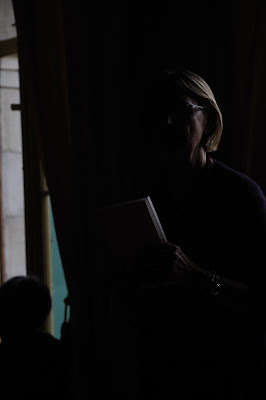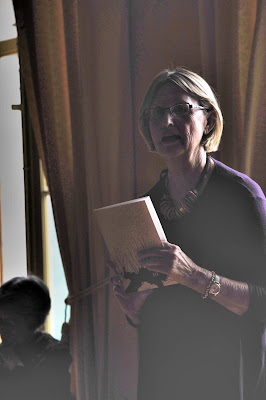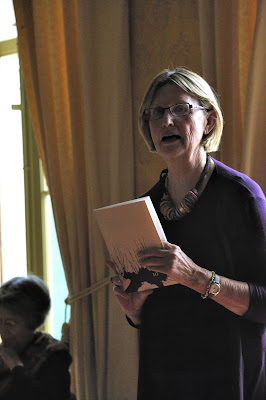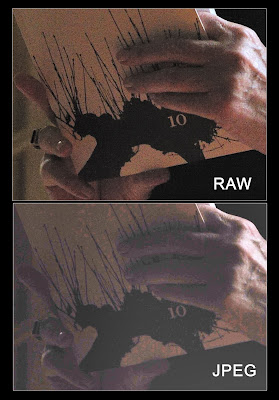Will your camera save files in RAW format?
Is RAW worth using?
Not if you listen to some people. Consider the photo expert whom Ralf quoted in his comment to my last post. "Use JPG format,” that so-called ‘expert’ wrote, “because RAW needs more memory and is rarely useful”.
Of course RAW needs more memory. That’s because the files contain more information.
JPG is a ‘lossy’ compression format – which means it discards information in order to make the files smaller. And, once information is discarded, you can’t get it back.
This doesn’t always affect the look of your photos, I agree. And if you’re just photographing for your album or to e-mail photos to family and friends you probably won’t notice any difference.
But sometimes that extra information makes all the difference.
Let me give you an extreme example.
Last Saturday I was photographing the launch of a literary review – Offshoots 10 – at the Geneva Press Club. And my flash batteries died …
Is RAW worth using?
Not if you listen to some people. Consider the photo expert whom Ralf quoted in his comment to my last post. "Use JPG format,” that so-called ‘expert’ wrote, “because RAW needs more memory and is rarely useful”.
Of course RAW needs more memory. That’s because the files contain more information.
JPG is a ‘lossy’ compression format – which means it discards information in order to make the files smaller. And, once information is discarded, you can’t get it back.
This doesn’t always affect the look of your photos, I agree. And if you’re just photographing for your album or to e-mail photos to family and friends you probably won’t notice any difference.
But sometimes that extra information makes all the difference.
Let me give you an extreme example.
Last Saturday I was photographing the launch of a literary review – Offshoots 10 – at the Geneva Press Club. And my flash batteries died …
 Looks a hopeless case, doesn’t it? And it would have been, if I’d been following the advice of the ‘expert’. But I had my camera set to record both RAW and JPG versions of an image (I’ll explain why I do this in another post.)
Looks a hopeless case, doesn’t it? And it would have been, if I’d been following the advice of the ‘expert’. But I had my camera set to record both RAW and JPG versions of an image (I’ll explain why I do this in another post.)This is the best I could do trying to recover something from the JPG version of the image …

Whilst this is the best I could do at recovery from the RAW file …

A side-by-side comparison of both images shows significant differences (click on it to see an enlarged version) ...

Neither image is brilliant. I’d be the first to admit that. But anyone would agree that the RAW file has given a better result, with more subtle gradations of colour and tone.
The limited information in the JPG version has caused the pixels to go ‘blocky’ (Look at the cover of the book she's holding, near the top, or her fingers). The pixels have had to go to either one state or the other with nothing in between.
All right. So I had spare flash batteries, the event went on for some time, and I was able to get lots of other photos. (You can see them here.) No big deal that I screwed up on one.
But what if this had been a one-off incident, so brief there’d been no time to take any more photos? Then I would have thanked my lucky stars that I was using RAW.
Is RAW for you?
That's impossible to say. Only you can decide that. But in my next post I'll discuss what it is, and its advantages and disadvantages.
Don't write off RAW because you think it's too complicated or the files are too big.
The limited information in the JPG version has caused the pixels to go ‘blocky’ (Look at the cover of the book she's holding, near the top, or her fingers). The pixels have had to go to either one state or the other with nothing in between.
All right. So I had spare flash batteries, the event went on for some time, and I was able to get lots of other photos. (You can see them here.) No big deal that I screwed up on one.
But what if this had been a one-off incident, so brief there’d been no time to take any more photos? Then I would have thanked my lucky stars that I was using RAW.
Is RAW for you?
That's impossible to say. Only you can decide that. But in my next post I'll discuss what it is, and its advantages and disadvantages.
Don't write off RAW because you think it's too complicated or the files are too big.








